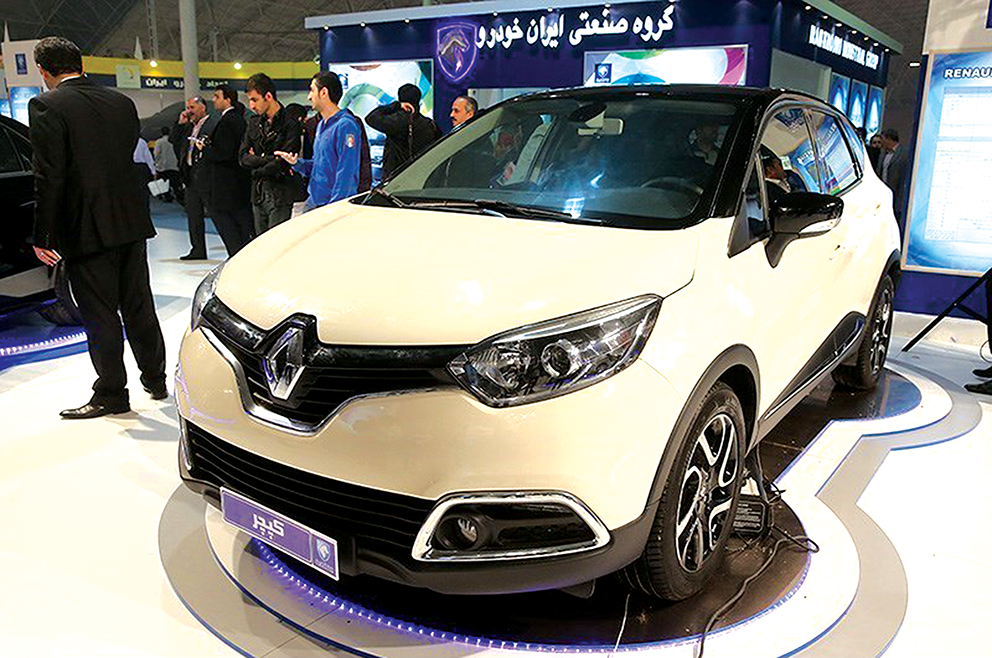The auto industry’s annual production capacity should reach 3 million, the minister of industry, mine and trade said Wednesday, adding that the new production target requires an export-oriented development plan to be implemented in the next few years.
“Auto industry experts should focus on making changes to the current car production procedures so as to increase the average life expectancy of Iranian-made cars,” Mohammadreza Nematzadeh said. He added that, in its recent meeting, the national automotive policy council has decided to form a special working group to spot the challenges faced by the domestic automakers.
Unofficial analysis have put the number at less than 5 years, while according to the Consumer Reports (www.consumerreports.org), the average life expectancy of a new vehicle these days is around 8 years or 150,000 miles. For some well-built vehicles, it can go 15 years and 300,000, if properly maintained.
New figures indicate that Iran’s auto production has got off to a strong start in the fiscal year 2014/15, predicting steady growth in new car sales over a 4-year period to 2018.
According to a report by IRNA, Iran registered a 73.4% year-on-year increase in auto output to 404,010 vehicles between March 21 and August 22, compared with 232,993 vehicles in the same period a year earlier. A total of 345,217 sedans were manufactured in the reported period, representing an annual increase of 74.3% from 198,059 units.
European Cars in Iran Auto Show
On Wednesday, the CEO of Iranian automaker Iran Khodro, Hashem Yekeh Zareh, inaugurated an international auto show in the northeastern city of Tabriz. The new Mercedes-Benz E250, Renault Captur, Renault Clio4 and two Chinese cars, Dongfeng Fengshen S30 and H30 were unveiled on the first day of the exhibition.
Renault Captur, a mini-crossover vehicle, is likely to fill the gap in the Iranian market for mid-size cars with a higher ground clearance.
The Clio4 is a mid-size hatchback with low fuel consumption. It will be produced with knock-down kits from the company’s main factories in Europe. The Captur is based on the fourth generation Clio, using similar parts, and incorporates design lines from a concept design revealed in 2012.
Both the Clio and the Captur achieved 5-Star rating at the 2013 EuroNCAP tests in Germany. Currently, no date has been set for full production to start as the French company is waiting to see if Iran and the P5+1 will agree to a long anticipated nuclear energy deal.
Renault’s absence from the Iranian car market, along with Citroen and Peugeot, has been felt over the past few years. In 2013, Renault along with a host of other European and East Asian car companies exited the Iranian car market over sanction threats from the US government. Renault in particular was considerably hurt by the pullout, with many employees at their plants in France forced to lay off due to drop in sales.
In the aftermath of last year’s interim nuclear agreement between Iran and the P5+1, a group of French businessmen and other top delegates visited Tehran to meet with government and trade officials.
Among the group were representatives from the French auto sector, who immediately began negotiating with their former Iranian counterparts for a possible resumption of ties. Currently, a few Renault models are produced locally in the Iranian market. The models include the Dacia Logan I (Romanian subsidiary), known as the L90 Tondar in Iran’s market, which is produced by three different local manufacturers. There is also the Renault Megane II produced by Pars Khodro. Renault also has contracts to jointly export cars such as the Dacia Duster (Renault Duster), Megane III (Renault Scala), Safrane, Koleos and Fluence to Iran.
Future Prospects
Last week, Zareh stated that new conditions have been set for joint ventures with foreign firms. “Mutual investment is the prime condition to cooperation with foreign companies,” he said, in a sign that IKCO wants explicit transfers of technologies, physical capital and know-how to Iran.
Iran’s car-making industry has been battered for over a year by international sanctions imposed by the West amid a dispute over Tehran’s nuclear energy program. In 2011, Iran was Peugeot’s largest market after France, accounting for more than 13 percent of the firm’s global deliveries.
Spooked by international sanctions, Peugeot left Iran in spring 2012. It sold 458,000 vehicles in the country in 2011.
Last April, the CEO of French carmaker PSA Peugeot Citroen held talks in Tehran with his Iranian joint venture partner to consider returning to the country.
“Fulfillment of the previous commitments, transferring the technical know-how, mutual production of cars as well as selling Iran Khodro’s vehicles through the French exporting network were discussed and reviewed during the meeting,” Zareh said at the time.
In November, Iran and the P5+1 group of major world powers reached an interim deal in Geneva in which Tehran agreed to partly roll back its nuclear activities in exchange for limited sanctions relief. Under the deal, the car industry would be exempt from any sanctions.


